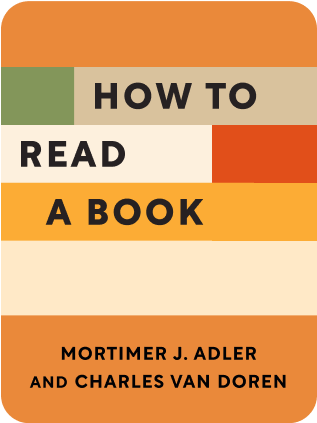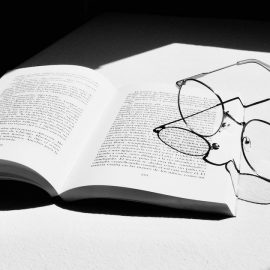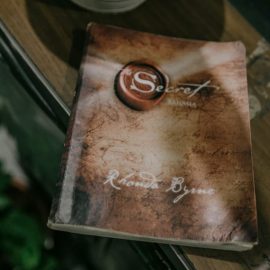

This article is an excerpt from the Shortform book guide to "How to Read a Book" by Mortimer J. Adler and Charles van Doren. Shortform has the world's best summaries and analyses of books you should be reading.
Like this article? Sign up for a free trial here .
According to the authors of How to Read a Book, what is good reading? Why is it important to read for comprehension rather than passively?
In their book, Adler and Van Doren assert that good reading is active rather than passive. They talk about the importance of reading for comprehension rather than just grasping the surface level and they believe that the best books challenge you and force you to grow.
Continue below to learn what good reading is, according to Adler and Van Doren.
What Is Good Reading?
What is good reading? While some consider reading to be passive in nature, Adler and Van Doren argue that reading for the purpose of comprehension is an active pursuit. This is a bit like the difference between merely hearing someone’s words and actively listening with the goal of comprehending what the words mean. If you read passively (without effort), you might register the surface level of what is said, but you won’t truly understand what the author is trying to say. (Shortform note: Studies show that reading for comprehension requires significant cognitive effort, but that this type of reading isn’t the most demanding—reading with the goal of revising the text requires even more mental effort.)
The authors believe there are two types of active reading (note that this does not include reading for pure entertainment, which is a relatively passive pursuit in terms of cognitive effort):
- Reading to collect facts. The authors argue that if you understand the book completely without exerting any extra effort, then you have only gained information from the book—you haven’t improved your understanding. You’ve simply added to your existing collection of facts on the subject.
- Reading for comprehension. When you read for comprehension, the authors believe that you won’t glean all the meaning from the book on the very first try. Instead of just adding to your collection of facts on a subject, the book will challenge you to find new ways to think about those facts or relate them to one another. You’ll begin to think about not just what is the case, but why it is the case. This type of reading expands your understanding and increases your reading skills.
However, we don’t live in a world that’s conducive to understanding.
- The authors argue that most people are not taught how to read beyond elementary school. That is, courses no longer teach how to learn more effectively by reading. This book aims to bridge this gap. (Shortform note: This is no longer the case, at least in theory. As of 2021, 41 of the 50 United States had adopted the Common Core Standards, which require instruction in both analytical and comparative reading for students in the last two years of high school. However, in practice, it’s likely that some schools are better than others at implementing these core standards, and many high school graduates may still lack critical reading skills.)
- Adler and Van Doren believe that today’s media is designed to require little deep comprehension. The data and viewpoints that we see in the media are designed to make the consumer agree with a preselected opinion. (Shortform note: Numerical data (such as percentages) might seem more objective, but that often isn’t the case. In How to Lie With Statistics, author Darrell Huff describes the many ways people manipulate numbers to support whatever conclusion they want to make, like using bad sampling practices.)
The authors feel that the best books challenge your reading ability and force you to grow as a reader. They also believe that to be well-read is not to have read a large number of books, but to have a high-quality understanding of good books. (Shortform note: There are many ways to define being “well-read.” The authors insist you can be well-read without being widely read, but they don’t attach limits to this idea. Can a reader have an intimate understanding of two great books and be considered well-read? Alternatively, would they use the term “well-read” to describe someone well-versed in the classics of just one genre, country, or subject?)
| In 19th Century America, All Reading Was “Reading for Comprehension” As we noted earlier, the authors believe that “reading for comprehension” is a unique type of reading, distinct from reading for information. In Amusing Ourselves to Death, author Neil Postman argues that classifying “reading for comprehension” as just one category of reading is a modern idea because, in the past, there were no alternatives: All reading was for the purpose of comprehension because print was the most accessible medium for sharing ideas. In other words, reading was such a critical part of early American society that deeply understanding what you read was crucial. How did “reading for comprehension” evolve into its own, separate task? Postman argues that two inventions changed the nature of reading in 19th century America, the first being the telegraph. The invention of the telegraph made it possible to communicate short bursts of information across great distances. Over time, the country evolved from a slow, print-centered intellectual culture to one that valued speed and quantity of information over relevance. Reading The Federalist Papers and thoughtfully debating the contents with your family was out—glossing over eye-catching headlines of news from around the world was in. The development of modern photography also contributed to this new hunger for information to be delivered in quick, easy-to-digest formats. Instead of slogging through a long book about life in another culture, you could glance at a photograph and immediately get a sense of another world, without all the mental effort of reading. Now, two centuries later, we spend our free time scrolling image-based social media platforms. For better or for worse, “reading for comprehension” has become an entirely separate activity that is no longer a requirement to participate in daily life. |

———End of Preview———
Like what you just read? Read the rest of the world's best book summary and analysis of Mortimer J. Adler and Charles van Doren's "How to Read a Book" at Shortform .
Here's what you'll find in our full How to Read a Book summary :
- How to be a better critic of what you read
- Why you should read a novel differently from a nonfiction book
- How to understand the crux of a book in just 15 minutes






